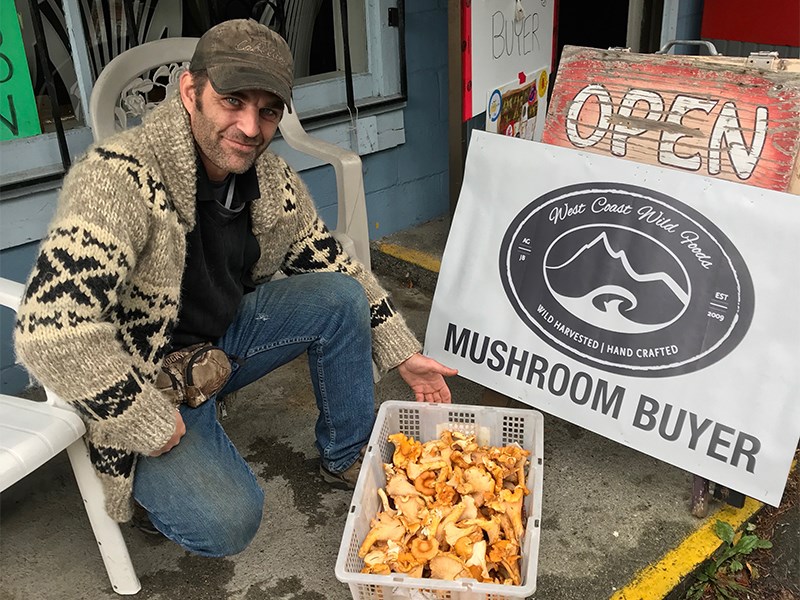Edible wild mushroom foragers are hopeful this fall will be productive for fungi, despite the season starting late, according to Cranberry mushroom buyer Rob Baird.
“It’s a good year for us in Powell River,” said Baird, who grew up in Powell River and has been picking mushrooms for years.
Baird said prices are up this year and pickers have not seen prices near $20 per pound for quite some time. The price looks as though it could go as high as $30 per pound, he added.
“There may not be $1,000 days, but we can hope,” said Baird.
Similar to the mushrooms themselves, mushroom stations are popping up around town in previously vacant storefronts and advertising to buy a variety of mushrooms, including the coveted pine mushrooms and others with names that roughly describe what they look like: cauliflower and lobster. Then there are the morels and chanterelles.
Powell River resident Ioni Wais teaches classes about mushroom identification and appreciation at Vancouver Island University.
“The sense I get from talking to people is that the season hasn't been super fruitful yet," said Wais. “But there's still hope."
This year’s crop suffered due to the hot, dry summer weather, said Baird. The crop needs summer heat and rain to get started, he added.
“We completely missed that,” said Baird.
The window for mushrooms in Powell River usually runs from the end of September to November when the cold weather is sustained, he added.
Mushroom foraging is increasing in popularity in Powell River, not just due to the chance for making some money, but also because the region’s forests are so accessible. Close to 200 people belong to Wais’ Powell River-specific, mushroom-identification group on Facebook.
Baird said there are few local residents who have not gone out at some point looking for the elusive pine mushrooms.
“Probably just about everyone who lives in Powell River has tried it,” he said.
Baird said he prefers picking in old-growth forests or even second-growth forests if they are well established.
“Every harvester is different,” he added. “They have their secret patches and they'll never tell; it's like fishing on land.
Mushroom picking requires skill, patience and a little luck, but knowing how to identify edible mushrooms from poisonous ones is key for foragers. While pickers tend to go out looking for the edible varieties mostly, Wais said pickers benefit greatly when they have an understanding of the broad diversity of fungi found in forests around Powell River.
"I've found that taking a genuine interest in the mushroom diversity and all the groups of fungi out there leads to better mushroom hunting overall," said Wais.
The more mushrooms a person is able to identify, the more adept they can become in distinguishing edible versions from poisonous ones.
“Even if you are sure the mushroom you're harvesting is an edible one, it might not be,” said Wais.
Wais said it is particularly prudent to learn how to identify common deadly mushrooms such as the death cap and deadly galerina, especially since the latter is sometimes mistaken for the edible honey mushroom. Carefully checking each mushroom collected and then having someone with more experience and knowledge double check against field-guide descriptions are important tips for staying safe, he added.
Wais said hard and fast rules about identification do not exist and that if there is ever any doubt about a mushroom, it should be thrown out. Someone who thinks they may have eaten a poisonous mushroom should seek medical help immediately because symptoms sometimes do not show until several days later and by that time it may be too late, he added.
“There are bold mushroom eaters and old mushroom eaters,” said Wais, “but there are no bold, old mushroom eaters.”



